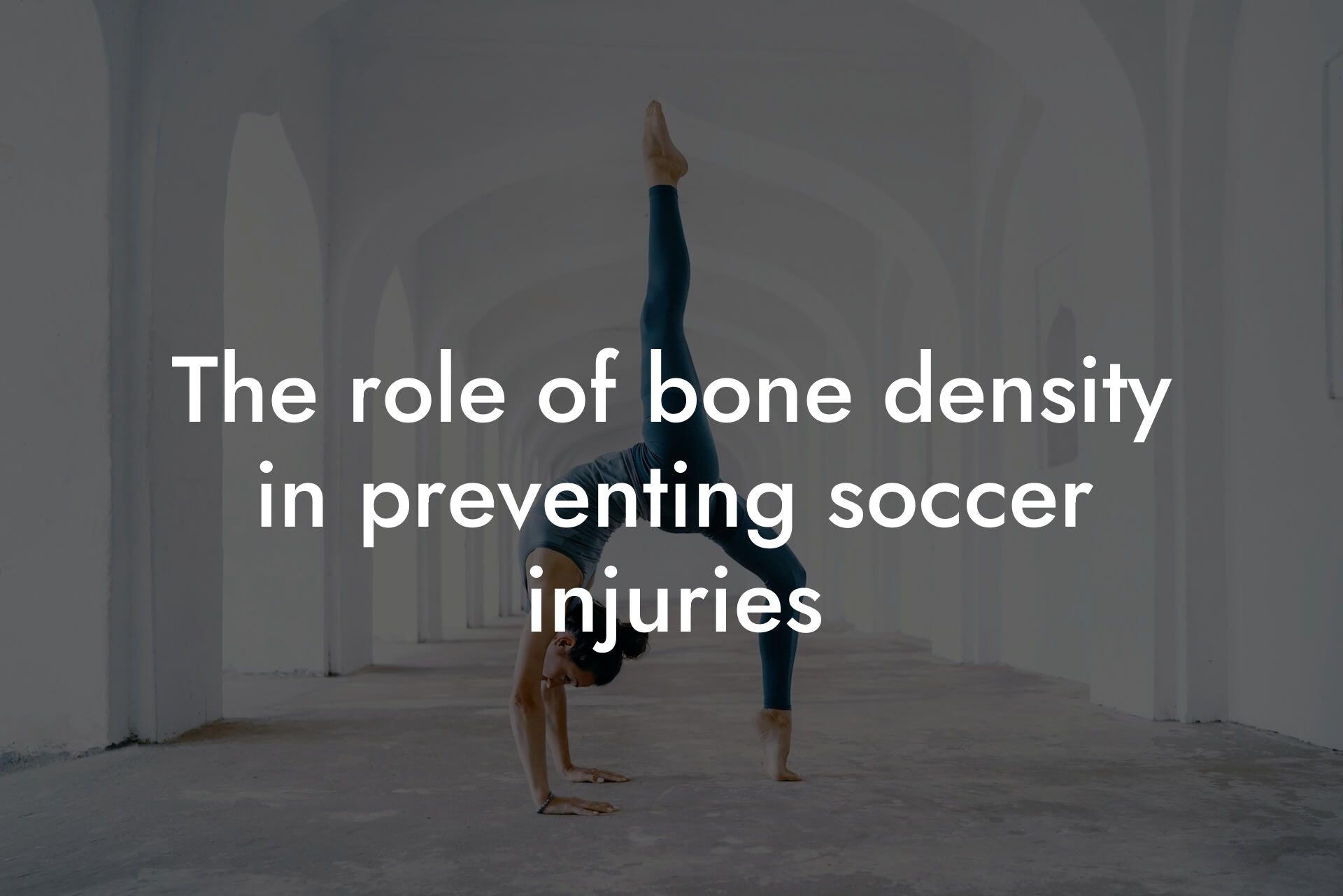Why Body Fat Matters in Soccer
As a soccer player, you know that every advantage counts on the field. One often overlooked aspect of performance is body fat percentage. Excess body fat can hinder agility, speed, and overall performance, giving your opponents an edge. Reducing body fat can significantly enhance your soccer agility, allowing you to outmaneuver and outperform your opponents. In this article, we'll explore the importance of body fat reduction for soccer players and provide actionable tips to help you achieve your goals.
Table of Contents
- Why Body Fat Matters in Soccer
- The Ideal Body Fat Percentage for Soccer Players
- The Impact of Excess Body Fat on Soccer Performance
- Nutrition Strategies for Reducing Body Fat
- Exercise Strategies for Reducing Body Fat
- Progressive Overload and Periodization
- Monitoring Progress and Adjusting Your Strategy
- Frequently Asked Questions
The Ideal Body Fat Percentage for Soccer Players
The ideal body fat percentage for soccer players varies depending on factors such as position, age, and sex. Generally, a body fat percentage between 6-13% is considered optimal for male soccer players, while female players aim for 16-23%. However, these are general guidelines, and individual needs may vary. A DEXA scan can provide a precise measurement of your body fat percentage, helping you tailor your training and nutrition plan to your specific needs.
The Impact of Excess Body Fat on Soccer Performance
Excess body fat can have a profound impact on soccer performance. Carrying extra weight can:
- Decrease speed and agility, making it harder to change direction quickly
- Reduce endurance, leading to fatigue and decreased performance over time
- Impede power and acceleration, making it harder to explosively accelerate or decelerate
- Increase the risk of injury, particularly to joints and muscles
By reducing body fat, you can improve your overall performance, increase your confidence, and gain a competitive edge.
Nutrition Strategies for Reducing Body Fat
A well-planned nutrition strategy is essential for reducing body fat. Focus on whole, nutrient-dense foods, including:
- Lean protein sources: chicken, fish, turkey, and plant-based options like beans and lentils
- Complex carbohydrates: whole grains, fruits, and vegetables
- Healthy fats: nuts, seeds, avocado, and olive oil
Aim to create a calorie deficit of 500-1000 calories per day through a combination of reduced caloric intake and increased energy expenditure. Be sure to stay hydrated by drinking plenty of water throughout the day.
Exercise Strategies for Reducing Body Fat
A comprehensive exercise program should include a combination of cardiovascular exercise, strength training, and high-intensity interval training (HIIT). Aim for:
- 150-200 minutes of moderate-intensity cardiovascular exercise per week
- 2-3 strength training sessions per week, focusing on exercises that work multiple muscle groups at once
- 2-3 HIIT sessions per week, incorporating exercises like sprints, burpees, and jump squats
Incorporate soccer-specific drills and exercises into your training program to improve agility, speed, and overall performance.
Progressive Overload and Periodization
To continue making progress and reducing body fat, it's essential to incorporate progressive overload and periodization into your training program. Gradually increase the intensity and difficulty of your workouts over time, and alternate between periods of intense training and active recovery. This will help prevent plateaus and ensure continued progress.
Monitoring Progress and Adjusting Your Strategy
Regularly monitoring your progress is crucial to achieving your goals. Use a combination of metrics, including:
- DEXA scans to track changes in body fat percentage
- Weight and body fat measurements
- Performance metrics, such as speed, agility, and endurance
Adjust your nutrition and exercise strategy as needed based on your progress. Be patient and stay consistent, as reducing body fat takes time and effort.
Reducing body fat is a critical component of enhancing soccer agility. By implementing a well-planned nutrition and exercise strategy, incorporating progressive overload and periodization, and regularly monitoring progress, you can achieve your goals and take your soccer performance to the next level. Remember to stay patient, stay consistent, and trust the process. With dedication and hard work, you can unlock your full potential and dominate on the field.
Frequently Asked Questions
What is the ideal body fat percentage for soccer players?
For soccer players, the ideal body fat percentage ranges from 6-13% for men and 16-23% for women. Having a lower body fat percentage can improve agility, speed, and overall performance on the field.
Why is reducing body fat important for soccer agility?
Excess body fat can slow down a soccer player's movements, making it more difficult to change direction quickly, accelerate, and decelerate. Reducing body fat can improve agility, allowing players to move more efficiently and effectively on the field.
How does body fat affect soccer performance?
Body fat can affect soccer performance in several ways. It can increase the energy expenditure required for movements, reduce power output, and slow down reaction times. Additionally, excess body fat can lead to injuries and decreased endurance.
What are the benefits of reducing body fat for soccer players?
The benefits of reducing body fat for soccer players include improved agility, speed, acceleration, and deceleration. It can also enhance endurance, reduce the risk of injuries, and improve overall performance.
How can I measure my body fat percentage?
There are several ways to measure body fat percentage, including skinfold measurements, bioelectrical impedance analysis (BIA), dual-energy X-ray absorptiometry (DXA), and hydrostatic weighing. Consult with a healthcare professional or registered dietitian to determine the best method for you.
What is the best way to reduce body fat for soccer players?
A combination of a healthy diet, regular exercise, and proper sleep habits can help reduce body fat for soccer players. Focus on whole, nutrient-dense foods, and incorporate high-intensity interval training (HIIT) and strength training exercises into your workout routine.
How long does it take to see results from reducing body fat?
The time it takes to see results from reducing body fat varies depending on individual factors, such as starting body fat percentage, diet, and exercise habits. However, with consistent effort, most people can see noticeable improvements in 6-12 weeks.
What are some common mistakes soccer players make when trying to reduce body fat?
Common mistakes soccer players make when trying to reduce body fat include crash dieting, overtraining, and neglecting proper nutrition. It's essential to focus on sustainable lifestyle changes rather than quick fixes.
How can I maintain my current body fat percentage while still improving my soccer agility?
To maintain your current body fat percentage while improving soccer agility, focus on incorporating agility-specific exercises into your workout routine, such as shuttle runs, cone drills, and plyometric exercises. Additionally, prioritize proper nutrition and recovery habits.
What role does nutrition play in reducing body fat for soccer players?
Nutrition plays a crucial role in reducing body fat for soccer players. Focus on whole, nutrient-dense foods, including lean proteins, complex carbohydrates, and healthy fats. Aim to create a calorie deficit while still providing your body with the necessary fuel for optimal performance.
How can I balance my macronutrient intake to support fat loss and soccer performance?
To balance your macronutrient intake, aim for a daily ratio of 2-3 grams of carbohydrates per kilogram of body weight, 1.6-2.2 grams of protein per kilogram of body weight, and 0.5-1 gram of healthy fats per kilogram of body weight. Consult with a registered dietitian or sports nutritionist for personalized guidance.
What are some healthy snack options for soccer players trying to reduce body fat?
Healthy snack options for soccer players trying to reduce body fat include fruits, nuts, seeds, carrot sticks with hummus, and protein shakes. Aim for snacks that are high in protein and fiber and low in added sugars and unhealthy fats.
How can I stay motivated to reduce body fat and improve soccer agility?
To stay motivated, set specific, measurable, and achievable goals for yourself. Celebrate small victories along the way, and find a workout buddy or accountability partner to help keep you on track.
What are some common myths about reducing body fat for soccer players?
Common myths about reducing body fat for soccer players include the idea that low-carb diets are always effective, that cardio exercises are the only way to burn fat, and that muscle gain will automatically lead to fat loss. Consult with a healthcare professional or registered dietitian to separate fact from fiction.
How can I incorporate strength training into my workout routine to improve soccer agility?
Incorporate strength training exercises that target your core, legs, and glutes, such as squats, lunges, and deadlifts. Aim for 2-3 strength training sessions per week, and prioritize exercises that mimic soccer-specific movements.
What are some agility-specific exercises that can help improve soccer performance?
Agility-specific exercises that can help improve soccer performance include shuttle runs, cone drills, ladder drills, and plyometric exercises like jump squats and box jumps. Incorporate these exercises into your workout routine 2-3 times per week.
How can I improve my endurance and stamina for soccer?
To improve endurance and stamina for soccer, incorporate cardio exercises like jogging, cycling, or swimming into your workout routine. Aim for 20-30 minutes of moderate-intensity cardio per session, 2-3 times per week.
What role does sleep play in reducing body fat and improving soccer agility?
Sleep plays a crucial role in reducing body fat and improving soccer agility. Aim for 7-9 hours of sleep per night to help regulate hormones, recover from intense training, and support muscle growth and repair.
How can I track my progress and stay accountable while trying to reduce body fat and improve soccer agility?
Track your progress by taking body fat measurements, tracking your workouts, and monitoring your nutrition. Share your goals and progress with a friend or accountability partner to stay motivated and on track.
What are some common injuries that can occur when trying to reduce body fat and improve soccer agility?
Common injuries that can occur when trying to reduce body fat and improve soccer agility include shin splints, muscle strains, and overuse injuries. Prioritize proper warm-ups, cool-downs, and recovery habits to reduce the risk of injury.
How can I incorporate flexibility and stretching exercises into my workout routine to improve soccer agility?
Incorporate flexibility and stretching exercises into your workout routine 2-3 times per week, focusing on exercises that target your hamstrings, quadriceps, and hip flexors. Prioritize dynamic stretching exercises like leg swings and lunges.
What are some mental preparation techniques that can help improve soccer agility?
Mental preparation techniques that can help improve soccer agility include visualization exercises, positive self-talk, and mindfulness meditation. Prioritize mental preparation exercises 2-3 times per week to improve focus, concentration, and overall performance.
How can I balance my soccer training with other aspects of my life?
To balance your soccer training with other aspects of your life, prioritize time management, set realistic goals, and communicate with your loved ones and colleagues. Make sure to schedule rest and recovery time to avoid burnout.
Here are some related articles you might love...
- Off-season training strategies for soccer players
- Using DEXA scans to monitor soccer player health and performance
- The role of bone density in preventing soccer injuries
- Balancing endurance and strength in soccer
- Hydration and recovery tips for soccer athletes
- Nutrition tips for maintaining energy levels during soccer matches
- How body composition affects speed and stamina in soccer
- Maintaining lean muscle mass for optimal soccer performance
- Strength and conditioning programs for soccer players
Zak Faulkner
Zak Faulkner is a leading authority in the realm of physical health and body composition analysis, with over 15 years of experience helping professionals optimise their fitness and well-being. As one the experts behind Tano Performance Group, Zak has dedicated his career to providing in-depth, science-backed insights that empower clients to elevate their physical performance and overall health.
With extensive knowledge of DEXA technology, Zak specializes in delivering comprehensive body assessments that offer precise data on body fat, muscle mass, bone density, and overall physique. His expertise enables individuals to make informed decisions and achieve their fitness goals with accuracy and confidence. Zak’s approach is rooted in a deep understanding of human physiology, combined with a passion for helping clients unlock their full potential through personalised strategies.
Over the years, Zak has earned a reputation for his commitment to excellence, precision, and client-focused service. His guidance is trusted by top professionals who demand the best when it comes to their health. Whether advising on fitness programs, nutritional strategies, or long-term wellness plans, Zak Faulkner’s insights are a valuable resource for anyone serious about taking their health and fitness to the next level.
At Tano Performance Group, Zak continues to lead our Content Team revolutionising how professionals approach their physical health, offering unparalleled expertise that drives real results.




